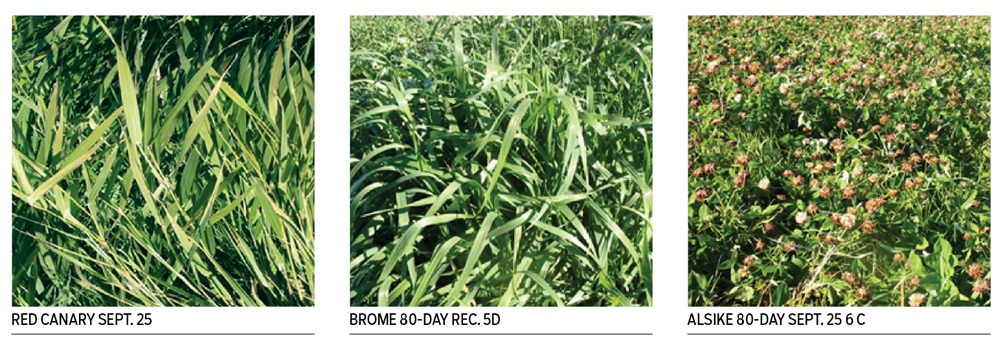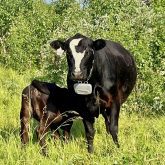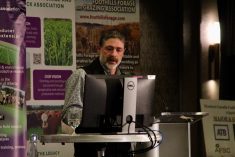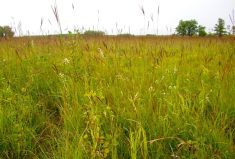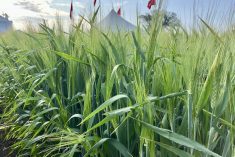Planned grazing describes the process we use to plan our grazing in holistic management. Planned grazing was developed by Allan Savory. It is based on two key points. The first is that overgrazing is due to time not the number of animals. It is vital that we understand this point if we want to have better pasture management. When we control the time of grazing, our animals are beneficial to the plants and the land. When we don’t control the time of grazing, our animals are detrimental to the plants and the land. Since this is true, to prevent overgrazing we need to control how long we stay in a pasture at one time (graze period) and how long we allow the plants to grow (recover) before being grazed the second time (recovery period).
Read Also

Body condition, nutrition and vaccination for brood cows
One of the remarkable events of the past century related to ranching has been the genetic evolution of brood cows….
Let me give you a simple example to emphasize this point. We used to keep a stallion. He was kept alone in a small pasture. The pasture was too large for one horse to utilize all the grass. The stallion was basically allowed to continuously graze for the entire growing season. What were the results? In the early spring the stallion would select and graze the most nutritious and most beneficial plants. He would then move on to graze something else. The first grazed plants would start to regrow. They would be young and tender. Long before the plants had a chance to replenish their root supplies they would be grazed a second time (overgrazing). As this is occurring the adjacent plants that had never been grazed are becoming more mature and less and less palatable. This process was repeated several times over the summer. The result was that the most desirable species were severely overgrazed (these areas looked like a golf course) and the other plants were underutilized (the plants were tall and mature). The most severe overgrazing ever seen on our ranch was done by one horse.
Have you seen something similar on your place? Perhaps you have a horse pasture or a small holding pasture where you put animals when it’s convenient. When you think about it, are these pastures overgrazed? Are they in poor condition compared to your better-managed pastures? I hope this simple example of overgrazing will help you understand why most pastures that are continuously grazed are overgrazed (the cattle graze the most desirable plants multiple times) and understocked (there are not enough animals to utilize all the plants).
- More ‘Holistic Ranching’ with Don Campbell: Holistic Ranching annual conference
The graze period refers to the number of days the animals are in a pasture at one time. When cattle enter a pasture they graze the most desirable plants first. They then move on and graze other plants. Overgrazing occurs when the plant regrows enough to be grazed a second time before they have enough time to replenish their root supplies.
To prevent overgrazing I would suggest a graze period of three to five days. The general rule is the shorter the graze period the better.
The recovery period refers to the number of days between grazings. The recovery period is the most important point in preventing overgrazing. It must be long enough for the plants to fully recover from the previous graze. The best indicator of full recovery is that the plants are ready to flower. Grazing at this stage is beneficial to both the plants and the land.
To prevent overgrazing I would suggest a recovery period of 60 to 90 days. My experience has been that you will be more pleased with the results as you move closer to the 90-day recovery. In some areas grazing once in the growing season may be the best scenario.
The second key point in planned grazing is that we monitor the regrowth where we started grazing. We then adjust our plan according to the growing conditions we are experiencing. In years of excellent growing conditions we may shorten our recovery. In years of poor growing conditions we may lengthen our recovery. It is essential to achieve full recovery under all growing conditions.
We change our recovery period by changing the severity of the graze. In an excellent year we will have a light severity of graze. In a poor year we will have a severe graze.
It is important to understand the difference between overgrazing and the severity of the graze. Overgrazing is detrimental. Grazing severely is not detrimental when done over a short period of time and allowing full recovery before another graze occurs. If you want to manage for the severity of the graze you adjust your cattle numbers not your recovery period.
A logical question at this point might be: how many pastures are required to do a good job of grazing? The best answer I know is that I do not know. I also don’t think anyone else knows.
However, by asking you two simple questions we can determine how many pastures you require. What recovery period do you plan to use? What graze period do you plan to use?
Knowing this information we can easily determine how many pastures you require (Table 1). The formula is (recovery period/graze period) + 1 equals the number of pastures required. Here is an example of the number of pastures required based on different graze periods. All are correct.
Table 2 shows an example of a 75-day recovery with a five-day graze and the 16 pastures required to prevent overgrazing.
Monitor the regrowth (pasture 16) and adjust the graze period according to growing conditions to achieve full recovery.
Table 3 demonstrates how the recovery period changes as the graze period changes. The severity of the graze also changes. This allows us to achieve full recovery in all growing conditions. All of these scenarios are correct for different growing conditions.
The three pictures at the top of this page demonstrate the quality and quantity of the forage at full recovery. All three pictures are taken on Sept. 25, 2007. This is after several frosts. The recovery period is 80 days.
Good grazing management pays. It pays even better when cattle prices are strong. I invite you to consider making the 2015 grazing season the best ever in your operation.
Happy trails.


